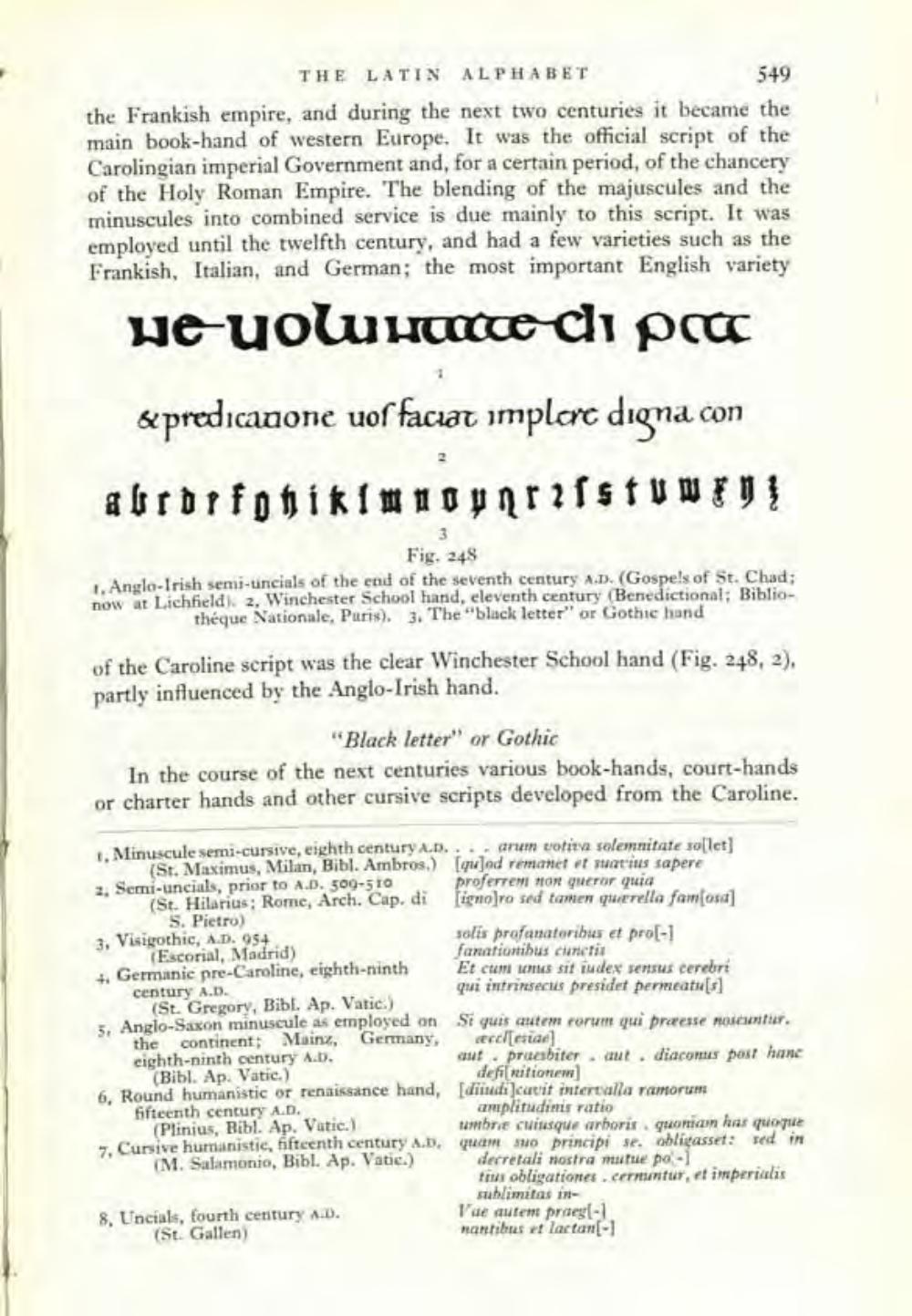________________
THE LATIN ALPHABET
549 the Frankish empire, and during the next two centuries it became the nain book-hand of western Europe. It was the official script of the Carolingian imperial Government and, for a certain period, of the chancery of the Holy Roman Empire. The blending of the majuscules and the minuscules into combined service is due mainly to this script. It was employed until the twelfth century, and had a few varieties such as the Frankish, Italian, and German; the most important English variety
we-yolunacce di pra &predicanone uof faciət implere digna con abrorfonikimo priistubro
Fig. 248 1. Anglo-Irish semi-uincials of the end of the seventh century A.D. (Gospels of St. Chad; now at Lichfield) 2, Winchester School hand, eleventh century Benedictional; Biblio
théque Nationale, Puris). 3. The "black letter" or Gothic hand
of the Caroline script was the clear Winchester School hand (Fig. 248, 2), partly influenced by the Anglo-Irish hand.
"Black letter" or Gothic In the course of the next centuries various book-hands, court-hands or charter hands and other cursive scripts developed from the Caroline.
Minuscule semi-cursive, eighth century AD).. . arum votira solemnitate sollet]
(St. Maximus, Milan, Bibl. Ambros.) [quod remanet et statius sapere 2. Semi-uncials, prior to A.D. 509-510 proferremi non queror quia
(St. Hilarius; Rome, Arch. Cap. di [ignoro sed tamen querella famosa
S. Pietro) 3. Visigothic, A.D. 954
solis profanatoribes et prol-1 Escorial, Madrid)
fanationibus cunctis +, Germanic pre-Caroline, eighth-ninth Et camions sit iudex sensus cerebrt century A.D.
qui intrinsecus presidet permeatus (St. Gregory, Bibl. Ap. Vatic.) 5. Anglo-Saxon minuscule as ernployed on St quis autem rerunt qui premesse montur.
the continent: Mainz, Germany, eccl[esia) cighth-ninth century AD).
out priabiter . aut. diaconus post hanc (Bibl. Ap. Vatic.)
definitionem 6. Round humanistic or renaissance hand, [cidicutit intervalla ramorum fifteenth century AD.
amplitudinis ratio (Plinius, Bibl. Ap. Vatic.
tambre cuitesque arboris quoniam has quoque 7. Cursive humanistic, fifteenth century A.D), quam principi se oblicasset: sed in (M. Salamonio, Bibl. Ap. Vatic.) decretali nostra mutue po
mus obligationes.cernuntur, et imperialas
sublimitas in 8. Uncials, fourth century A.D.
Vae autem praegl-1 (St. Gallen)
nantibus et lactan[-1




